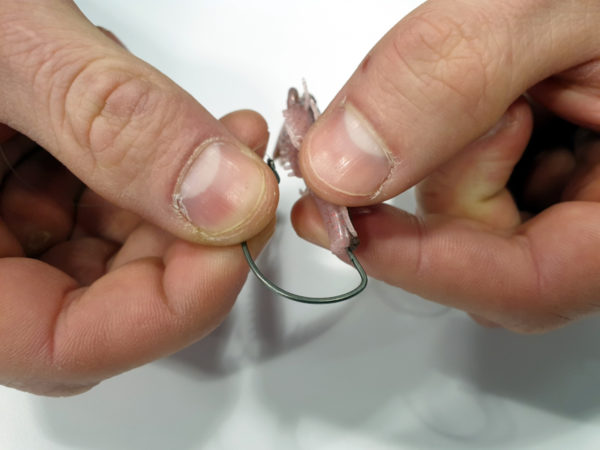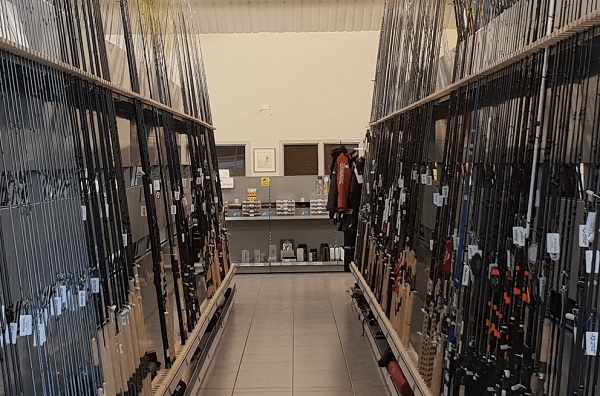Are you looking to fish soft plastic lures in heavy weed cover without getting snagged up or constantly catching and dragging weed? Then the Texas rig is probably the answer you’ve been looking for!
Heavily used by American bass anglers, the Texas rig has made its way over the big pond and is now influencing lure anglers all over the UK. Its sole purpose is to present a weedless lure in shallow weeded areas successfully, and its presentation is perfect for those scenarios.
The Texas Rig
The rig is simplicity itself! Only made up of 4 main components, an offset hook, an inline bullet sinker, a glass bead and a float stop. Yep, it’s that simple! So let’s have a look at how the rig goes together.
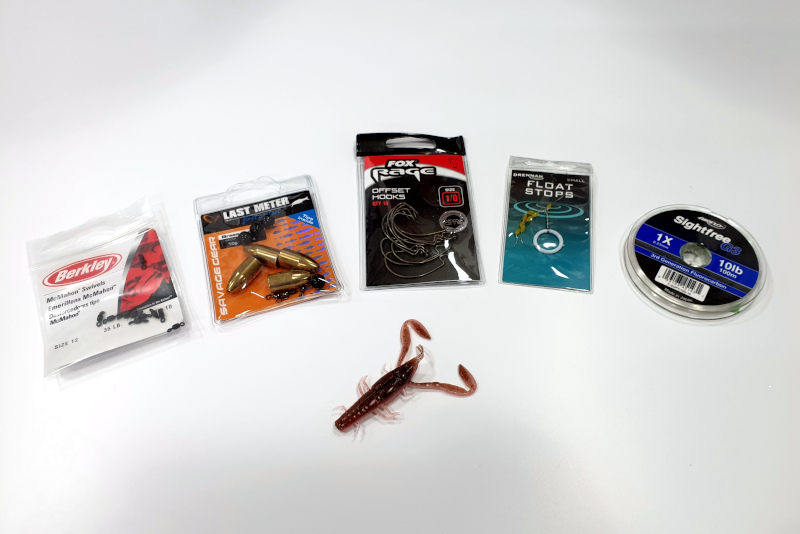
1. First of all, feed a float stop onto your fluorocarbon leader. The float stop is used to determine how far the inline bullet sinker can run up the line. (We recommend pushing the float stop up about 10inches from the hook for a free running rig). The free running sinker allows the fish to pick up the lure without feeling the weight of the sinker, this is ideal for those finicky or lethargic fish.

The other reason for the float stop is to peg the rig, also known as pegging. This is when the float stop is pushed down to hold the sinker in place, in front of the hook. This gives you a more streamlined presentation that will be less prone to snagging the sinker when fished over cover.
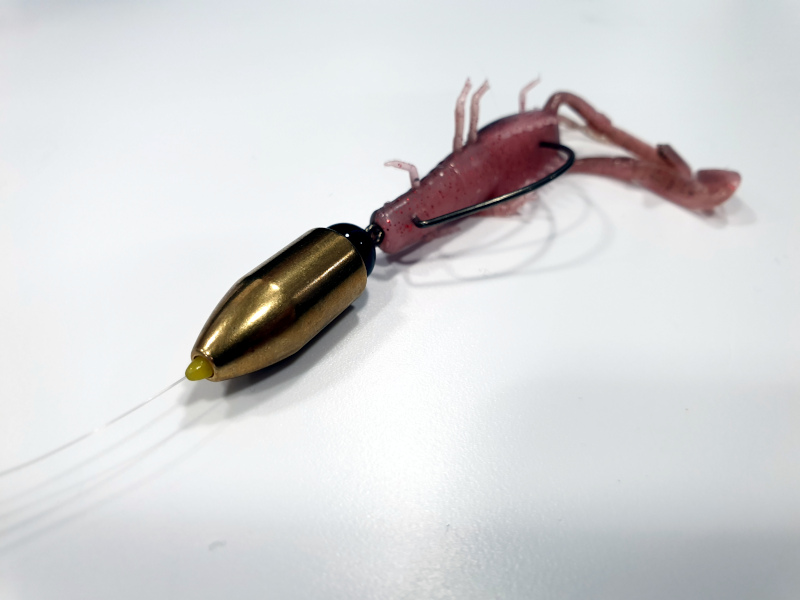
See how the float stop is pushed down to peg the weight and bead in place
2. Thread the inline bullet sinker onto the fluorocarbon leader, then thread the glass bead on behind the sinker. The inline bullet sinker does what it says on the tin, this provides the weight to sink the rig. The glass bead has two jobs, it protects the knot from the inline sinker but it also provides noise and vibration when the sinker is free running on the line and not pegged.

Thread the bullet sinker and glass bead on behind the float stop
When the lure is being retrieved, the sinker will slide down the line and connect with the glass bead and create a clacking sound. This can sometimes be the trigger stimulus required to entice a bite.
3. Once we have the float stop, inline bullet sinker and glass bead in place. It’s time to tie on your offset hook. Once this is done. Your rig is complete! Now we just have to add the soft plastic lure.
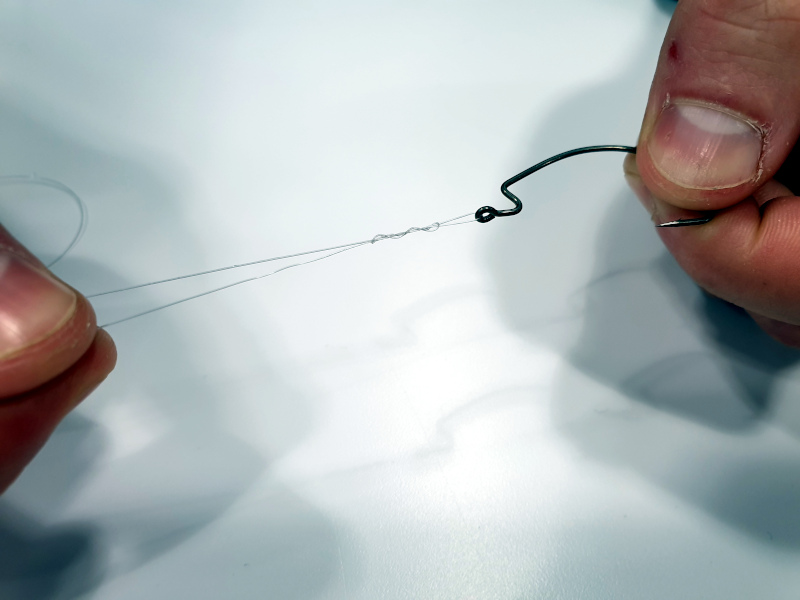
Tie in your offset hook
Rig Presentation
Rig presentation is extremely important. The weight of the inline sinker should be matched to the depth of water you are fishing. A good rule of thumb, is 1 gram for every foot of water you’re fishing over. E.g. 5 gram sinker for 5 foot of water. One thing to consider though, is the conditions, if fishing in windy conditions or undertow is present, increasing the weight of the sinker is required to ensure the rig stays on the bottom. It also helps aid casting and bite detection.

A ready to fish Texas rig
Matching the hook size to the size of the lure size is important. Too big a hook can impede lure action, too small a hook can effect hookups. Also contemplate, the gauge of wire used on the hooks you are using, the thicker the gauge, the stronger the line and faster actioned the rod should be to set the hooks. Alternatively, fishing to a thin gauge in really shallow weedy areas may result in the hook straightening out.
Hook Style
The most commonly used hook for Texas rigging is an offset wide gape hook. The reason for the wide gape is to provide a better hook up rate. This is due to the lure being hooked through the body, the wider gape provides more exposure of the hook point during the bite when using wider bodied lures. The reason behind using an offset hook is to rig the soft plastic lure in a way that it becomes weedless.
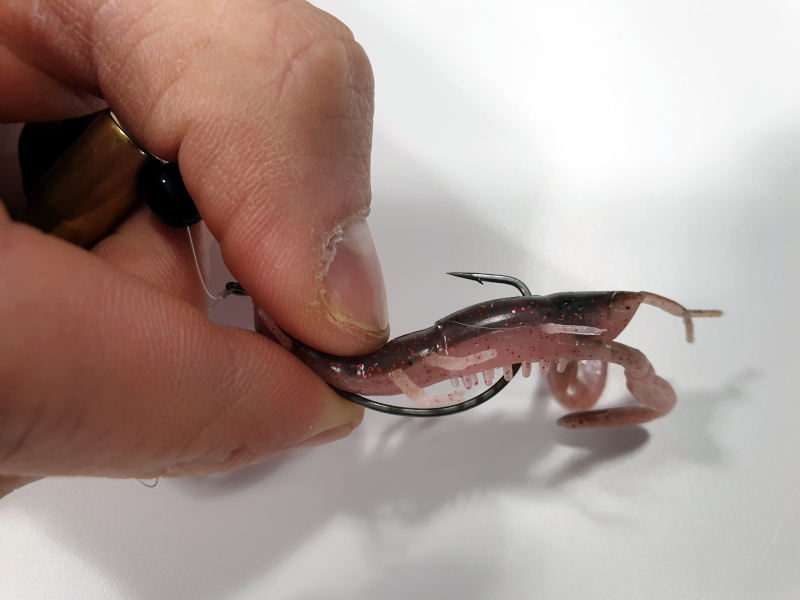
When the fish bites down on the lure the hook becomes exposed
The other style of Texas rig hook is a regular straight shank offset hook, these are favoured over the wide gape hooks when fishing heavy cover due to the more streamlined presentation they provide, ensuring the action of the lure is not hindered on the drop. These hooks are most commonly used with a slug or worm soft plastic lure.
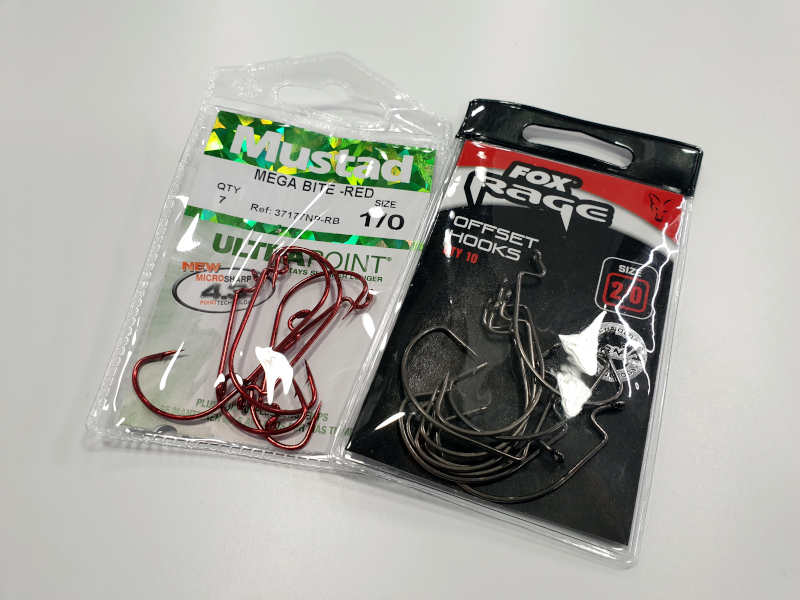
Wide gape offset hooks
Lure Colour
Lure colour is very important in any aspect of lure fishing. Lure choice should be based on the light conditions you’re fishing in as well as water clarity. So what options do you have?
Natural
Natural patterns imitate the prey fish that are present in the waters you are fishing. Natural patterns are ideal for high-level light conditions and when water clarity is good.
Fluorescent
Yup, you guessed it! Fluorescent patterns such as fire tigers etc. Are ideal for low level light conditions and murkier waters.
Black/Dark Colours
Believe it or not but black or dark patterns work in both in low and high light levels and in clear or murky waters. The silhouette created by black/dark lures can be seen by fish easily.
It pays to have different colour options available so you can attack different fishing conditions.
Lure Choice
There are 3 main styles of lures used for Texas rigging, shad type lures which are based on real-life fish imitations. Worms/slugs which are a very popular lure on the American market, due to their versatility. Then you have creature baits, designed to present something a bit different, based on crawdads, crayfish or any type of insect imitation. They provide plenty of vibration in the water due to them sporting tentacles, claws or flapping tails.
How To Rig A Soft Plastic Lure On A Offset Hook
To rig a soft plastic lure, insert the offset hook point straight through the nose of the lure, about a quarter inch. Ideally, you want to match the distance from the eyelet of the hook to where it first bends.
- 1
- 2
Next you want the hook point to turn 90 degrees and exit out the bottom of the lure. Doing this will ensure the hook point will be exposed on the top of the lure when the rig is complete.
Once the hook tip is out, slide the head of the lure up the hook shank and stop it when it reaches the eye of the hook. Now turn the lure, so the offset hook runs below the belly of the lure, but the hook point runs parallel to the back of the lure. It’s important that you re-enter the hook in the right location to keep the lure looking straight and natural.

3
To do this, hold the hook in the upright position from the middle part of the hook shank, and measure the hook against the lure. Wherever the bend of the hook lines up with the body of the lure is where you want to insert the point of the hook. Pinch the lure with your thumb and finger and use your thumb to mark where the hook point will enter the belly of the lure.

4
After pushing the hook point through the body of the lure, the hook point should be sitting parallel and snugly to the back of the lure, as previously mentioned ensure the lure is sitting straight, if it’s not, redo it. Otherwise, the lure will not run straight and may impede the lures action.
- 5
- 6
Most lures will come with a groove on their back, which the offset hook point sits in to make it weedless. However, if you feel the hook point is still slightly exposed. You can pinch the back of the lure and slightly push the hook point into the back of the lure body to hide it, to ensure it is completely weedless.

7
How To Fish The Texas Rig
The Texas Rig is a very versatile rig. After casting the rig out, let it sink to the bottom while controlling the slack line. What we mean by controlling the slack, is managing the slack line so you can pick up any bite during the fall. By jigging the lure subtly along the bottom and pausing it every so often to entice a bite. The idea is to mimic a dying fish or creature moving along the bottom. The rig can also be used for’dead stick fishing’ this is when the lure is left to lay static on the bottom for a minute or two before restarting the retrieve. The reason for deadsticking is to allow the fish to find your bait through the cover you are fishing it over. (Ensure your line is taught, to keep direct contact with the rig when deadsticking – this is so you can pick up the subtlest of bites)
There you have it, Texas rigging, in a nutshell, it’s a very effective method to use when fishing in heavy weeded areas where a weedless rigged lure is required. Give it a go and see how you get on! If you require any further advice of Texas rigging, just give the Angling Active team a call. We are happy to help.


